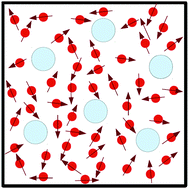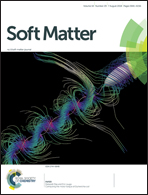Phase separation in binary mixtures of active and passive particles
Abstract
We study binary mixtures of small active and big passive athermal particles interacting via soft repulsive forces on a frictional substrate. Athermal self propelled particles are known to phase separate into a dense aggregate and a dilute gas-like phase at fairly low packing fractions. Known as motility induced phase separation, this phenomenon governs the behaviour of binary mixtures for small to intermediate size ratios of the particle species. An effective attraction between passive particles, due to the surrounding active medium, leads to true phase separation for large size ratios and volume fractions of active particles. The effective interaction between active and passive particles can be attractive or repulsive at short range depending on the size ratio and volume fractions of the particles. This affects the clustering of passive particles. We find three distinct phases based on the spatial distribution of passive particles. The cluster size distribution of passive particles decays exponentially in the homogeneous phase. It decays as a power law with an exponential cutoff in the clustered phase and tends to a power law as the system approaches the transition to the phase separated state. We present a phase diagram in the plane defined by the size ratio and volume fraction of passive particles.



 Please wait while we load your content...
Please wait while we load your content...